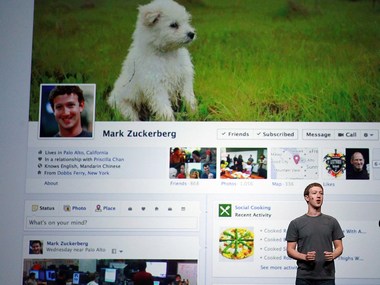According to The Cisco Connected World Technology Report, the majority of Indian youth surveyed said that “keeping up to date on Facebook is more important on a typical day than dating, spending time with friends, listening to music, or going to a party.” If that’s bizarre, other social media habits of youth on the Internet on India surprise. Roughly 7 in 10 Young Professionals indicate that they have ‘friended’ or follow their manager and/or co-workers on Facebook/Twitter. Relative to other countries, significantly large proportions of Young Professionals in Mexico, India, Brazil, Spain, and China who use Facebook/Twitter follow or have ‘friended’ both their manager and work colleagues on the site,” the report adds. Youth (not just in India) seem to have slightly questionable priorities. “Roughly half of Students (49 percent) and End Users (47 percent) consider the Internet to be ‘close’ in importance to water, food, air, and shelter in their lives; and one-third of respondents in each subgroup consider the Internet to be as important as these critical needs,” says the CISCO report. [caption id=“attachment_90946” align=“alignleft” width=“380” caption=“Facebook CEO Mark Zuckerberg announces Timeline as he delivers a keynote address during the Facebook f8 conference. Getty”]
 [/caption] What will be of concern to newspaper and magazine owners is how those surveyed consume news. In India, says the survey, 35 percent of college students say that the laptop is the primary source, 15 percent get their news fix from the desktop, 17 percent from TV, 10 percent from smartphones – and just 2 percent from newspapers and magazines. In the case of employees, newspapers are doing better – but just about. Forty percent get their news from their laptops, 14 percent from the desktop, 16 percent from TV, 13 percent from smartphones and 18 percent from newspapers and magazines. Only 2 percent of Indian respondents do not have a Facebook page; for 12 percent, Facebook is ‘always up’; 37 percent visit Facebook a few times each day; 23 percent visit it once a day. You can access the entire study
here
. Before votaries of digital and social media get all excited, it’s important that one has a look at the sample. The study is an extrapolation of responses from 200 individuals in India to an online questionnaire. Details of the respondent profile is part of the study.
[/caption] What will be of concern to newspaper and magazine owners is how those surveyed consume news. In India, says the survey, 35 percent of college students say that the laptop is the primary source, 15 percent get their news fix from the desktop, 17 percent from TV, 10 percent from smartphones – and just 2 percent from newspapers and magazines. In the case of employees, newspapers are doing better – but just about. Forty percent get their news from their laptops, 14 percent from the desktop, 16 percent from TV, 13 percent from smartphones and 18 percent from newspapers and magazines. Only 2 percent of Indian respondents do not have a Facebook page; for 12 percent, Facebook is ‘always up’; 37 percent visit Facebook a few times each day; 23 percent visit it once a day. You can access the entire study
here
. Before votaries of digital and social media get all excited, it’s important that one has a look at the sample. The study is an extrapolation of responses from 200 individuals in India to an online questionnaire. Details of the respondent profile is part of the study.
Anant Rangaswami was, until recently, the editor of Campaign India magazine, of which Anant was also the founding editor. Campaign India is now arguably India's most respected publication in the advertising and media space. Anant has over 20 years experience in media and advertising. He began in Madras, for STAR TV, moving on as Regional Manager, South for Sony’s SET and finally as Chief Manager at BCCL’s Times Television and Times FM. He then moved to advertising, rising to the post of Associate Vice President at TBWA India. Anant then made the leap into journalism, taking over as editor of what is now Campaign India's competitive publication, Impact. Anant teaches regularly and is a prolific blogger and author of Watching from the sidelines.
)